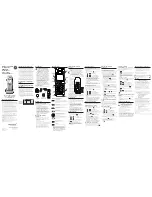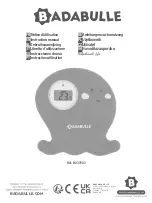
ZED-F9R - Application note
UBX-22035176 - R01
Contents
Page 5 of 30
C1-Public
1
Introduction
This document acts as a getting started guide for evaluating and using the u-blox ZED-F9R module
and high-precision sensor fusion technology. The guide is written with a focus on robotic applications,
which is the platform that requires the most comprehensive receiver setup. As such, the guide is also
suitable for other platforms where the setup is more simple.
The complete setup process is divided into self-contained chapters focusing on specific parts of the
setup. The setup process includes
•
preparing the host system
•
configuring the receiver
•
installing the receiver in a vehicle, and
•
running test drives
It is strongly recommended to go through the chapters in order to make the setup process easier.
The document may contain specific information based on the product documentation such as
Integration manual
which are updated regularly. Please refer to the
product documentation whenever there are inconsistencies between this document and the official
product documentation. This document is intended as a beginner’s guide and does not supersede
product documentation.
1.1
Required items
The following items are required for completing the setup in this guide:
•
An operational ZED-F9R module
•
A suitable multiband GNSS antenna
•
A host PC running u-center for F9 products
•
Serial communication between the receiver and the host
•
Means to provide odometer data to the receiver
•
Means to provide correction data to the receiver, including access to a correction service or a base
station
•
Means to properly attach the receiver to the vehicle
1.1.1
Operational ZED-F9R module
At the center of the setup is the ZED-F9R module installed on a printed circuit board (PCB). We
recommend the C102-F9R evaluation kit for first-time users, as it provides a tested, ready-to-use
device for most purposes. A custom design is also allowed, provided it follows the module’s hardware
design requirements (see
). The design should also provide at least a UART connection to the
receiver but having USB support is strongly recommended.
1.1.2
GNSS antenna requirements
During the evaluation phase, it is best to start with known working components and the design can
be optimized for cost, space, weight, or other considerations at a later stage. As a high-level summary,
the antenna must:
•
Be capable of multi-band L1 and L2 reception
•
Be an active antenna with at least 17 dB of gain
•
Be designed for real-time kinematic (RTK) applications with suitable phase center variation and
group delay characteristics
•
Include ground plane, if the antenna requires one






































